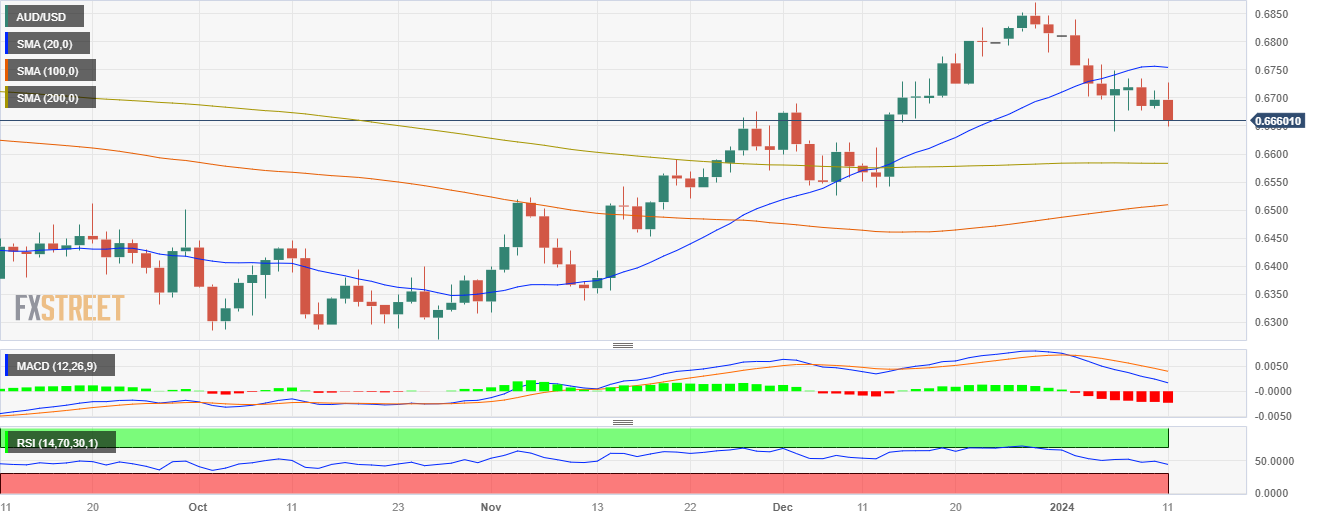On Thursday, the Australian Dollar (AUD) weakened against the US Dollar (USD), dropping close to 0.6685. This decline was largely influenced by unexpected high Consumer Price Index (CPI) figures from the US, which reduced expectations of a dovish approach from the Federal Reserve (Fed).
The US Bureau of Labor Statistics reported a rise in CPI to 3.4% year-on-year in December, exceeding the 3.1% of November and the anticipated 3.2%. December also saw a 0.3% month-on-month increase in CPI, higher than the forecasted 0.2%. The Core CPI, however, decreased slightly to 3.9% from November’s 4%.
Despite these figures, market players still largely expect the Fed to cut rates, with the CME FedWatch Tool indicating over a 50% likelihood of reductions in March and May, potentially bringing the target rate down to 450-475 basis points by June. However, this dovish market sentiment is capping potential gains for the US Dollar.
In terms of technical analysis, the AUD/USD pair presents a complex outlook. The Relative Strength Index (RSI) shows a negative slope and is in bearish territory, suggesting that sellers have been dominant recently and hinting at a possible continued downtrend. This is supported by the increasing red bars of the Moving Average Convergence Divergence (MACD).
Looking at Simple Moving Averages (SMAs), the pair is below the 20-day SMA, indicating a short-term bearish trend. However, it remains above the 100 and 200-day SMAs, suggesting that the long-term trend is still bullish. Therefore, despite recent bearish movements, the longer-term outlook remains favorable for the bulls.
AUD/USD daily chart
